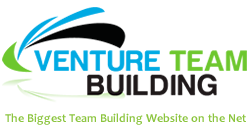Assessment Days are a fantastic way to assess potential candidates during the recruitment process. Team building and problem solving activities provide a less formal and enjoyable recruitment experience for candidates and allow you to see how candidates work in small teams when faced with a challenge, and identify key qualities of candidates to ensure suitability for your company or organisation.
The purpose of this article, is to provide you with all the information you need to run your own in-house assessment day including helpful links and downloads.
What is an Assessment Day?
An assessment day is an important part of the recruitment process for many organisations and usually lasts for the best part of a day, or even two days. Assessment days allow organisations to assess candidates over an extended period of time, whilst offering candidates the chance to find out more information about the organisation and the job advertised.
A well-structured recruitment assessment day is generally considered to be amongst the fairest and most objective means of selecting new employees. Interviews are a great way to discuss previous experience with candidates and how they feel they can contribute to your organisation, but team building activities and group exercises, allow assessors to see what they can do, rather than just talking about it.
I recommend purchasing my eBook, The Team Building Activity Book. The book provides full descriptions for over 30 team building challenges including printable challenger briefs, ready to use programmes (including recruitment assessments) and access to exclusive member downloads. Buy it now for $19.99.
What happens at an Assessment Day?
During assessment days, candidates are required to participate in a number of individual and group exercises. Assessment days usually consist of an interview, case studies, problem solving/group exercises and presentations (both group and individual). Candidates are also provided with an introduction presentation, tour of the workplace, an opportunity to meet and talk to current employees and a questions and answers session at the end of the day.
What do I need?
Assessment days typically take place at employer’s offices, using the meeting room as a base for the day. Some companies like to hire an external venue if space is an issue. As long as you have a large meeting room and another smaller room for the interview and presentation, you are good to go. If you want to run a longer assessment (say 2 days), you could host your assessment at a hotel, hire a conference room, book a room for candidates and provide meals in the restaurant.
Example Assessment Day Breakdown
- 9:00am: Arrival and sign in
- 9.30am: Welcome presentation
- 10.00am: Group dynamics
- 10:40am: Break
- 11.00am: Case studies
- 11:40am: 1 x Group exercises
- 12.30pm: Lunch
- 1.30pm: 3 x Group exercises
- 3:40pm: Break
- 4.00pm: Assessment review
- 4:30pm: Q&A (Job Specific)
- 5.00pm: Evaluation and depart
- Note: Interviews and individual presentations throughout the day
Group and Problem Solving Exercises
Group exercises are used to assess a candidate’s behaviour when working with others, and the overall group dynamics involved in the task. Each exercise will vary in detail, with the ability to identify different key skills, but the structure and format tend to remain the same.
Groups will be provided with a challenge, usually a team building activity and they will then have x amount of time to work together to complete the challenge. The purpose of these exercises is to test candidate’s ability to work as part of a team, their ability to work under pressure, how they communicate with others and if they demonstrate the skills required for the job role.
Typical key skills assessed in a group exercise include:
- ability to work as part of a team
- social skills and confidence
- leadership qualities and potential
- listening and communication skills
- ability to problem solve and work under pressure
- how compatible a candidate’s skills and behaviour are for the role
- how well they respond to failure and critical thinking ability
Not only can group exercises be used to highlight and identify strengths, but it can also be used to identify any negative or destructive behaviours such as to whether they are short-tempered, aggressive or selfish.
Due to the workplace relevance, recruitment teams can use group exercises to judge how well a candidate will perform in the real workplace and what qualities candidates possess, making this a useful selection tool.
Thanks to an insight into candidate’s behaviour and overall performance during group exercises, it is considered a reliable and powerful recruitment tool, playing an important aspect in the final recruitment decision.
Other Assessment Day Exercises
Group Discussion and Case Studies
Provide your candidates with a workplace scenario or problem. Allow them to discuss the point and assess candidates on their contribution to the discussion, ability to listen to others and to make a positive contribution to the discussion. For a leaderless method, print of a number of scenarios and hand to the candidates one at a time before moving on to the next one. With this session, candidates must address the issue and find a logical conclusion. At the end of the discussion, affirm your company’s position and procedure on the subject.
Candidate Presentations
Presentation exercises on an assessment day are often used for job roles that require good customer service or presenting information such as teaching, coaching, sales, finance and management.
Typically, candidates are made aware of the presentation before the assessment day to prepare in advance, it is then integrated alongside the interviews which will run through the day. Candidates may be asked to give a presentation based on a scenario or a job relevant topic. Allow 5-15 minutes for each presentation and allow candidates to use PowerPoint, flip chart and any other presentation tool required. You can also, have it as an allocated session on your assessment day programme.
Here are a few key skills assessed during presentations:
- Public speaking ability
- Confidence and ability to remain calm
- Clarity of speech and verbal skills
- Level of engagement and influence
- Ability to relay information and improvise (if necessary)
- Ability to design effective presentations
When to run an assessment day?
Before attending an assessment day, candidates are usually screened through telephone interviews, short face to face interviews or even online testing. Any unsuitable candidates are usually phased out at this stage, and suitable candidates are invited to the assessment day. Assessment days tend to be the final step in the interview process, this is because they can take up space and require a few key employees to be available to organise, act as assessors and run the day.
Why run an assessment day yourself?
Because it looks more professional for the organisation and is more affordable than sending candidates to assessment centre (which costs as much as £3000 per candidate).
Candidates get to visit where they will be working, build relationships with other candidates (who they may work with) and get to know about the job role from people that actually know their stuff!
Research carried out by business psychologists into the best methods of recruitment have demonstrated that traditional job interviews are not an accurate way to assess and forecast a candidate’s ability to a job. The reason behind this is that interviews may be affected by the interviewer’s pre-conceptions or bias.
During an assessment day, candidates are scored fairly and accurately based on important competencies specific to the job role. All candidates are assessed the same (by the same criteria and assessors) ensuring a fair assessment for all involved. The exercises they are asked to participate in, usually reflect the type of work they will be doing, and subsequently their ability to perform during an assessment is thought to be an indication of their potential ability to do the job in question.
Who should assess candidates?
An assessment day is usually conducted by a group of assessors made up of members of an organisations HR team and department managers. In theory this makes the process more objective, because the final decision on each candidate must be agreed on by a team of assessors, using a range of structured assessment methods, rather than just one person.
Have just one person assess candidates during an exercise, with a total of two to three assessors swapping assessing duties every exercise. It is also important that assessors do not discuss candidates and how they scored to ensure a fair assessment and prevent favouritism.
Assessors should create a positive environment, yes they’ll be writing notes down but assessors should be polite, smile, look at candidates and not be afraid to talk to them. Make candidates want to work for you, not fear speaking to you. A job interview is a scary experience for all candidates, make it easier for them to be them (and not try to be someone they thing you want to see).
How to Score Candidates
To ensure a fair assessment, candidates should be assessed the same way using the same criteria. When working with organisations, I get assessors to score candidates based on teamwork, communication and attitude. For each criteria, candidates will receive a score of -1 (poor performance), 0 (average), +1 (above average) and these are then added together to create their overall score for the exercise. You can add more criteria based on the job specification.
Repeat this with all tasks and challenges for a total assessment score. The higher the score, the better the quality of candidate. Write notes to justify the score and if there is anything that you observed that worries you about the candidate.
Download example score sheet and criteria sheets in the member area of the website – available to those who have purchased my book.
Example Generic Criteria
| ‘- 1’ Behaviours (Below Standard) | ‘0’ Behaviours (Meets Standard) | ‘+ 1’ behaviours (Above Standard) | ||
| Generic Criteria | Teamwork | Little or no involvement, does not include others, lack of support, tries to bring the team down, uncooperative with both candidates and staff. | Inclusive of others, gets involved, motivated, helps others, cooperative. | Encourages others involvement, always helping others, motivates the team. |
| Communication | No contribution, inappropriate contributions, does not respect others opinions, overpowers others not giving them chance to speak. | Patient with others, respects others views, gives opinions/ideas, communicates in an appropriate manner. | Gives opinions/ideas that are well thought out, ensures that all have a chance to speak, confident and clear presentation. | |
| Attitude | Lateness, failure to wear appropriate clothing on a number of occasions, lack of interest and negativity towards tasks, does not take part, unwilling to learn, lack of enthusiasm. | Punctual, participates in tasks willingly, open to learning, well presented, friendly with other candidates. | Shows constant enthusiasm, continued interest throughout tasks, keen to learn, approachable |
Decision Making
Once you’ve finished your assessment day and your candidates have gone home. Now it’s time to make the decision on the best candidate/s for the job advertised.
Before you begin, add up all the scores for the exercises and summarise the points noted on the score sheets. All paperwork used should be kept following the assessment, held by the HR department in case any candidates require feedback or want to challenge a decision.
Once you have the scores and notes added up, you should have a list of the best candidates in order. Have your assessors discuss the candidates. At this stage it should be quite easy to make a decision on the best person/s moving forwards based on the information you have available. [/sociallocker]
General Tips
It is essential to remain professional at all times. ‘First impressions last’, you want the best candidates to work for you, so ensure you provide a positive introduction to your organisation. This is the time candidates will look at what you do as an organisation and make a decision whether the job is right for them.
Each candidates should behave like the employees of your organisation for the day and this should be reflective in their behaviour. If you have any concerns about a candidate, note it down and review at the end of the day.
Tell candidates to just be themselves, not someone they think you’re looking for. A lot of candidates act a certain way in an interview, but one week in to the job, their employer discovers someone completely different.
It is normal for large organisations to recruit to a standard not a number. Typically, all, several or even none of the candidates are hired – this really depends on your organisation and how many positions you have. Make sure your candidates are made aware of this before your assessment starts otherwise, you’ll find them arguing, competing and disagreeing throughout the day.
Know your set standard before your assessment day, brief all assessors and stick to it.
A considerable investment goes into getting the right employee through the door. Getting recruitment right from the start, helps lower staff turnover, create a happier working environment and saves a lot of time and money.
If you have any questions, then use the comments box below or feel free to send me an email at michael@ventureteambuilding.co.uk
Some of this content was originally produced on WikiJob’s guide to assessment centres.




Hey veгy interestіng blog!
Glad you liked it. What did you find most interesting?
Thanks for this blog.
Marcell I’m glad you like it.
Your posts are awesome.
Glad you enjoy them.
Good thoughts.
Thanks
Very nice post. I just stumbled upon your site and wished to say that I’ve really enjoyed surfing around your blog posts.
Glad you found it helpful.
Thanks for your article.
You’re Welcome.
Neat post.
Thanks.
I have read some good stuff here. Definitely worth bookmarking for revisiting. I wonder how much effort you put to create such a great informative website.
Burk – Thanks glad you enjoyed it. There are a lot of team building resources and activities here which represents a lot of effort.